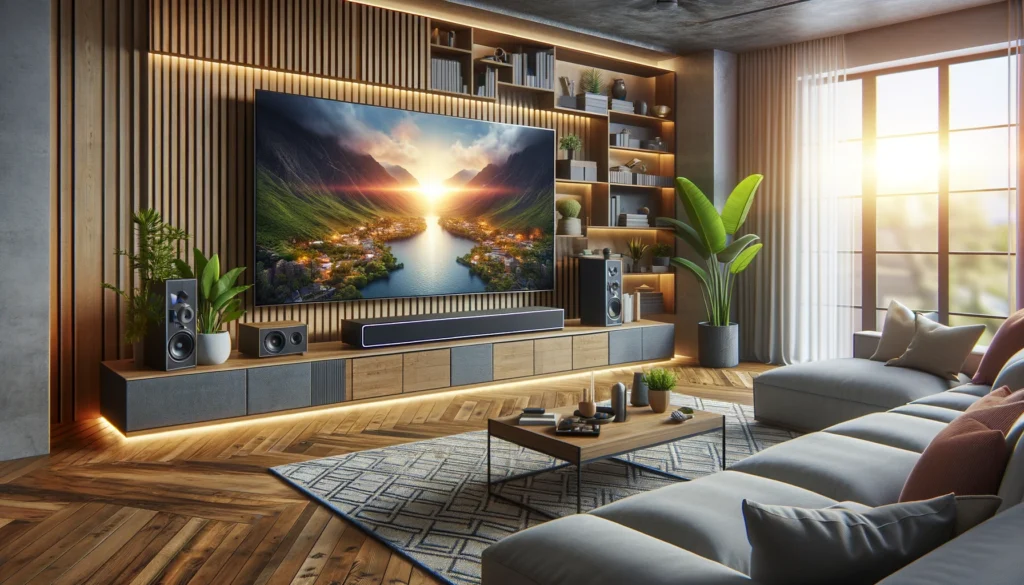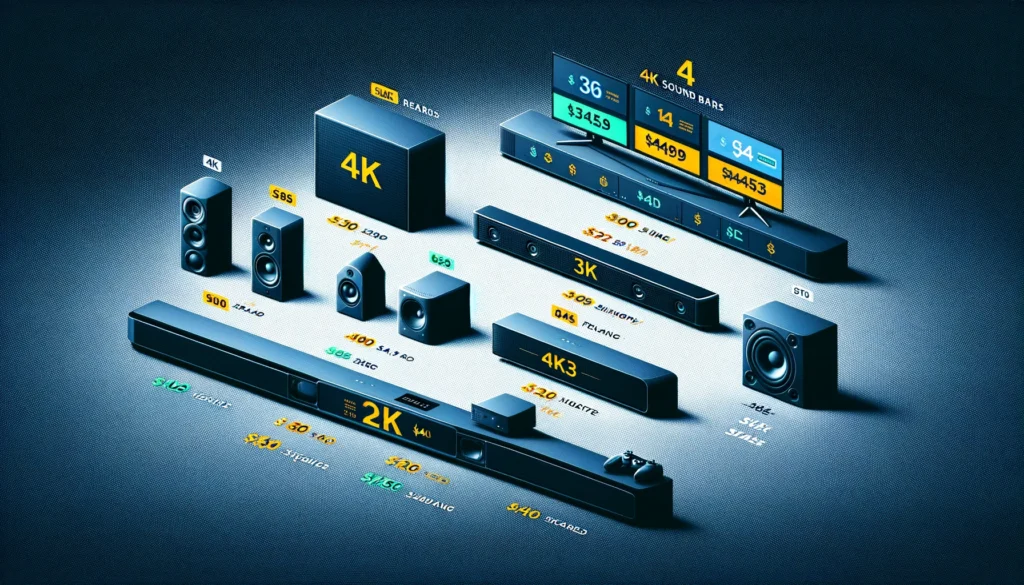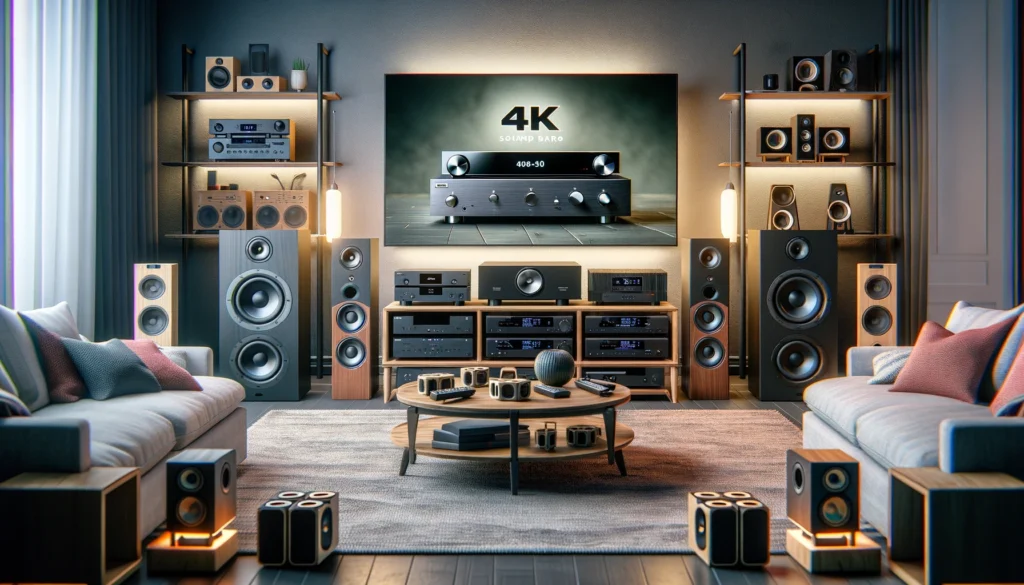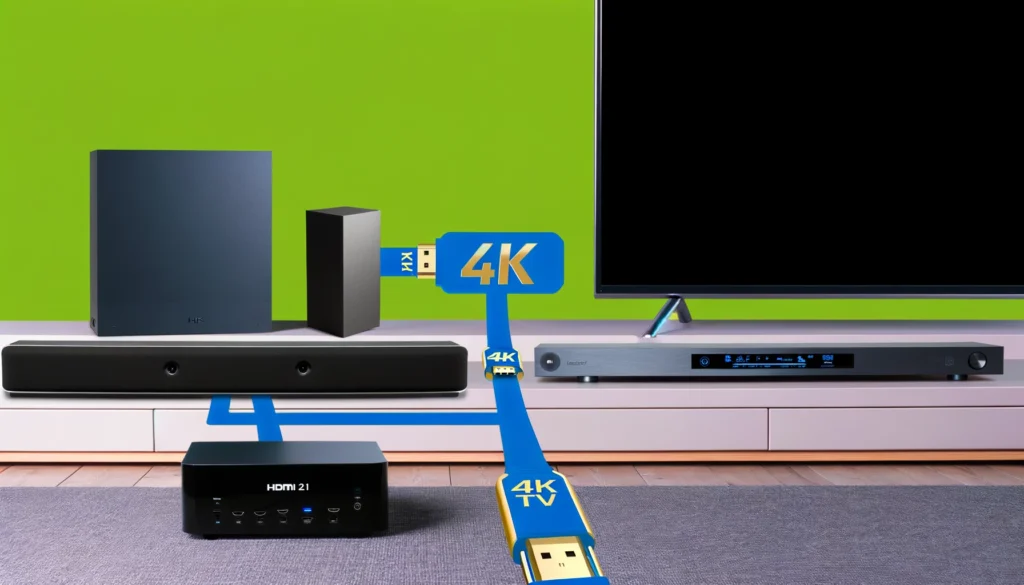Have you wondered whether upgrading to a cutting-edge 4K soundbar is worthwhile for your home entertainment needs?
4K soundbars enable incredible audio and video benefits, but prove most valuable for users who regularly enjoy 4K content and crave premium fidelity.
Let’s dive in to see what 4K soundbars offer, who benefits most, and how to choose the best model for your situation.
Are 4K Soundbars Worth It?

In short, 4K soundbars are certainly worthwhile purchases, but especially benefit home theater fans wanting pristine audiovisual quality.
These systems enable uncompressed 4K passthrough, lossless surround sound decoding, and 3D audio formats like Dolby Atmos for greatly enhanced fidelity and immersion.
However, budget users content with minor bumps versus TV speakers will find standard setups sufficient. We’ll explore in more detail below about whether 4K soundbars make sense for your exact needs and budget.
What Do You Get From a 4K Soundbar?

A 4K soundbar offers several key enhancements compared to standard HD soundbars.
The first benefit is 4K video passthrough allowing you to connect 4K video sources like Blu-ray players and have the signal pass through the soundbar to your 4K TV without any degradation in quality or compression in resolution.
This ensures you get pristine, uncompressed 4K picture quality without any artifacts or chroma subsampling caused by inferior HDMI chipsets.
In addition, 4K soundbars support advanced immersive audio codecs like Dolby Atmos and DTS:X. These sound formats use special upfiring drivers and digital signal processing to simulate overhead and surround effects beyond standard 5.1 or 7.1 surround sound.
With Dolby Atmos or DTS:X, you get incredibly lifelike audio imaging placing sounds in a 3D space for greater realism. The soundstage feels wider and more enveloping thanks to these object-based sound formats.
4K soundbars also tend to offer more HDMI inputs than lower-tier models.
This allows you to connect multiple 4K HDR entertainment sources like games consoles and streaming boxes to take advantage of the soundbar’s 4K pass-through and audio decoding capabilities. With three or more HDMI ports, you can create a central 4K AV hub.
Finally, 4K soundbars incorporate larger, more powerful speaker drivers and components to take advantage of the full dynamic range and resolution offered by surround sound or 3D audio formats from 4K Blu-ray and streaming sources.
Lower-frequency effect channels specifically address deep bass.
Who Needs a 4K Soundbar?

There are several user profiles who can benefit significantly from investing in a full-fledged 4K soundbar system:
Home theater enthusiasts who have already upgraded to 4K HDR televisions and 4K Blu-ray players stand to gain immensely from matching their systems with 4K soundbars.
Anyone who cares deeply about high fidelity video and audio will appreciate the uncompromising quality 4K soundbars enable.
Gamers with next-gen consoles like the PlayStation 5 and Xbox Series X output cutting-edge graphics in 4K 120fps. Connecting directly to a 4K soundbar ensures zero loss of visual quality passing from console to TV.
Surround formats like Dolby Atmos also dramatically boost immersion in supported titles.
Movie buffs with large personal libraries of 4K UHD Blu-rays deserve premium soundbars capable of handling lossless Dolby TrueHD and DTS-HD Master Audio soundtracks without downmixing or loss of dynamics range.
Fans of blockbuster action flicks need 4K soundbars to feel the full impact of effects.
Finally, audio and videophiles seeking ultimate clarity, dynamic range, and an immersive bubble of sound will enjoy the benefits 4K soundbars bring.
Critical listeners want truly lossless processing of high-resolution audio formats which only the most advanced soundbars can achieve.
What About Price?

With cutting-edge functionality and connectivity, 4K soundbars that genuinely enhance your entertainment experience do require a more serious budget compared to basic 2.1 channel soundbars or simple TV speaker upgrades.
There is high demand for top-tier panels, video processors and object-based audio hardware.
Entry-level 4K soundbars can retail below $500, offering decent Dolby Atmos or DTS:X support and 4K passthrough. However, inferior chipsets may compromise on video signals or restrict surround audio formats.
Budget buyers make some sacrifices.
Mid-range 4K soundbars in the $500 to $1,000 range trade blows in terms of premium build quality, connectivity options and immersive audio support. Most buyers get an ideal balance of price versus performance here without completely breaking the bank.
Finally, high-end audiophile 4K soundbars exceed $1,000 with no compromises made on chassis materials like metal and glass, or custom speaker configuration honing reference-grade surround sound replication powered by leading audio DSPs.
Deep bass extension demands serious woofer hardware.
Alternatives to Dedicated 4K Soundbars

There are several alternative options to premium 4K soundbars that may suit buyers with tighter budgets or different audio priorities:
First, 4K AV receivers offer similar connectivity for multiple devices, with multichannel speaker outputs rather than confined drivers.
For custom installs, receivers provide more flexibility in speaker placements using Dolby Atmos for truly overhead sound effects. However, setup complexity increases significantly.
Alternatively, certain 4K televisions now incorporate highly capable onboard audio like Dolby Atmos virtualization and subwoofer outputs to acknowledge poor builtin speakers of old.
Using wireless satellite speakers enhances output quality, retaining simplicity soundbars boast. But sound compression may occur.
Finally, premium bookshelf speaker systems provide incredible stereo separation and audio clarity that high-end audiophiles demand. Though lacking native surround sound support, two channel recordings shine on such setups.
Bookshelf speakers work well with vinyl records and lossless music streaming too versus just home theater usage.
Making Sure You Have Full 4K Connectivity

To truly unlock the complete suite of image and audio enhancements 4K soundbars enable, every single component in the video chain needs to comprehensively support 4K signals without one weak link compromising data throughput:
Even if your soundbar handles 4K flawlessly, if you connect an older 1080p Blu-ray player as the source, you squander the full potential.
Similarly, hooking up a 4K Apple TV to a 4K soundbar then out to a 1080p display wastes functionality. The TV itself must accept 4K resolution without downscaling.
Relatedly, the HDMI cables connecting each device play a crucial role maintaining pristine quality.
Using outdated High Speed HDMI cables rather than newer 48Gbps Ultra High Speed HDMI 2.1 standard cables can sabotage 4K HDR video signals or lossless multi-channel audio pass-through. Bandwidth caps strangulate fidelity.
Finally, making sure your television includes HDMI ARC or preferably eARC ports ensures audio can be passed back from the TV to a connected soundbar without quality loss or latency.
This facilitates smart features like controlling volume or media playback directly from the smarter soundbar system versus clunky TV UIs.
Getting The Right Features For You

4K soundbars span a vast range depending on the exact features integrated, so narrowing down priorities is essential to avoid overspending or missing out on must-have functionality:
In terms of audio format support, do you require Dolby Atmos over DTS:X or vice versa? Or is basic 5.1 surround sound via Dolby Digital or DTS sufficient for your needs? Object-based sound demands more processing power and specific driver arrangements.
Relatedly, do you want separate wireless satellite speakers and a subwoofer for more modular placement? Soundbars with integrated subwoofers limit bass presence but may suffice in smaller rooms. Larger spaces demand more sub output.
Examine what smart assistants are built-in too – Google Assistant, Amazon Alexa, Siri and Bixby allow hands-free voice control.
And do you plan to use streaming apps over HDMI inputs to play music and video? Or strictly disc-based media and live television? Any extra functionality must align with your actual usage to justify costs.
Ultimately the optimal 4K soundbar hinges on matching key features like HDMI connectivity.
Surround sound format support and voice assistants to your room size, viewing habits and future-proofing needs so you amplify entertainment experiences without paying for superfluous specs.
Conclusion
In conclusion, whether investing in a 4K soundbar system makes sense depends entirely on your home theater requirements.
For casual viewers satisfied with basic TV speaker quality, budget soundbars under $500 provide decent audio boosts while 4K passthrough and Dolby Atmos support may get ignored for years, wasting money.
However, discerning home theater fans and audiophiles with full 4K Blu-ray libraries, next-gen gaming consoles, and streaming set-top boxes already supporting 4K HDR content deserve premium soundbars matching their fidelity standards.
Processing lossless Dolby TrueHD or DTS-HD Master Audio without compromises demands serious hardware.
Likewise, small apartment dwellers lacking space for a separate AV receiver and surround speaker packages will appreciate slick integrated Dolby Atmos soundbars simulating immersive effects more reasonably.
Wall-mountable designs keep impact discrete while unlocking audio bliss.
If you routinely host movie nights or gaming sessions wanting to wow guests with theater-quality sound, exploit 4K soundbars transforming rooms into fully cinematic spaces. Eye-catching chassis and thunderous bass balance slick aesthetics with raw power.
Ultimately 4K soundbars qualifying as worthy investments must align with current and future A/V lifestyle requirements. Buyers valuing uncompromised quality driving immersive experiences benefit most, if budgets allow.
For cost-conscious folks content with minor enhancements beyond TV speakers though, needs likely get satisfied spending less.
